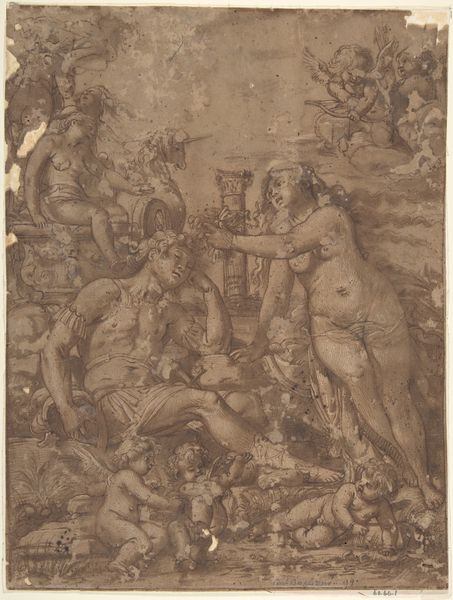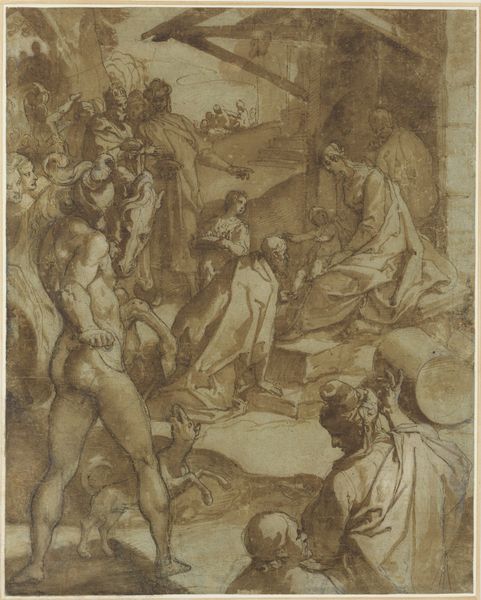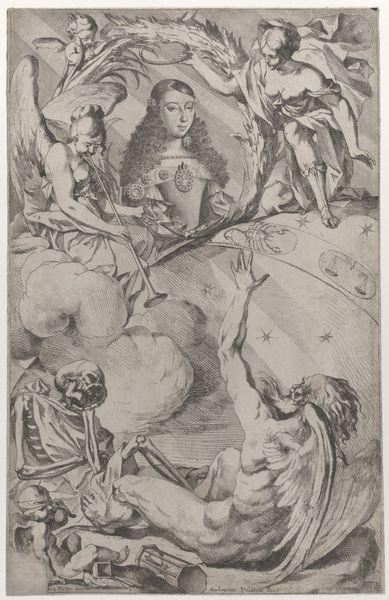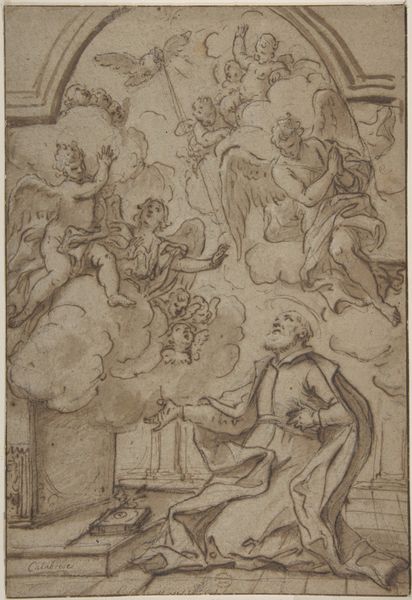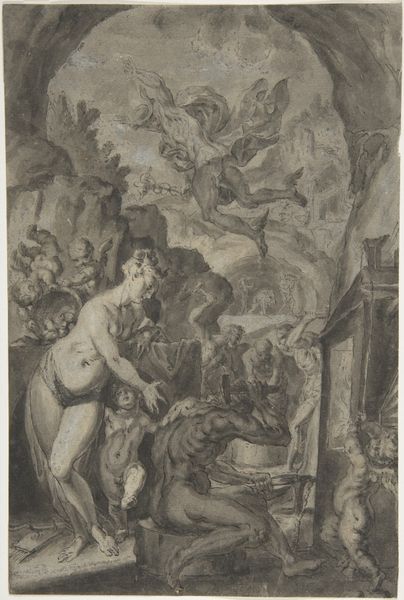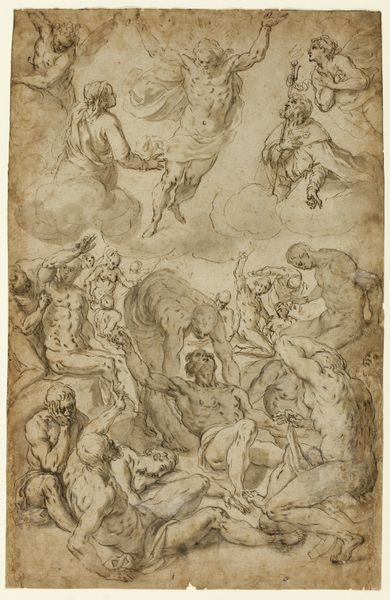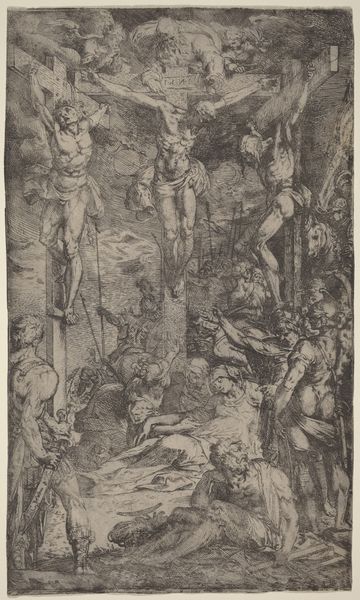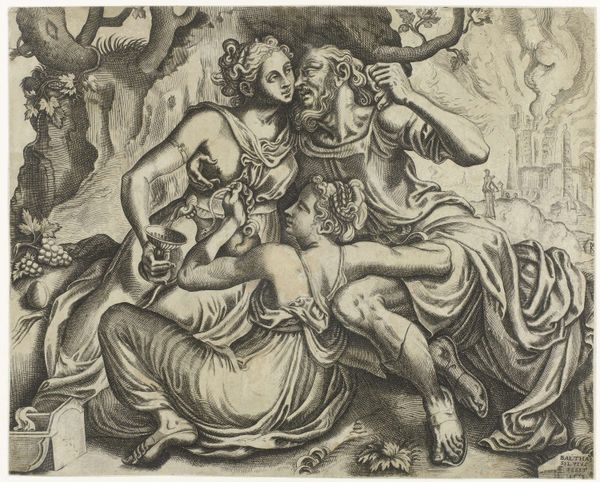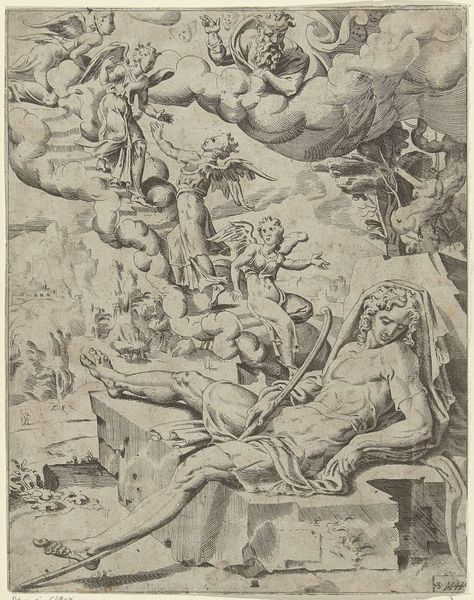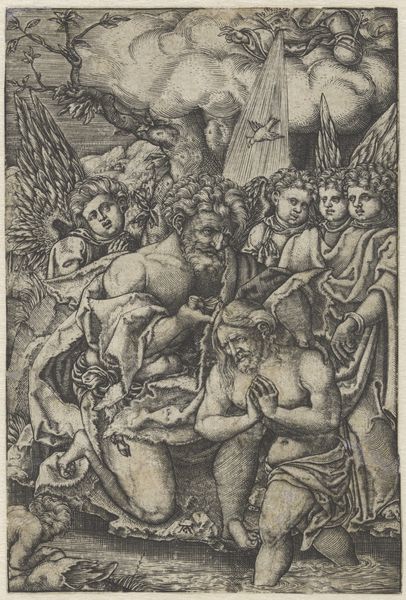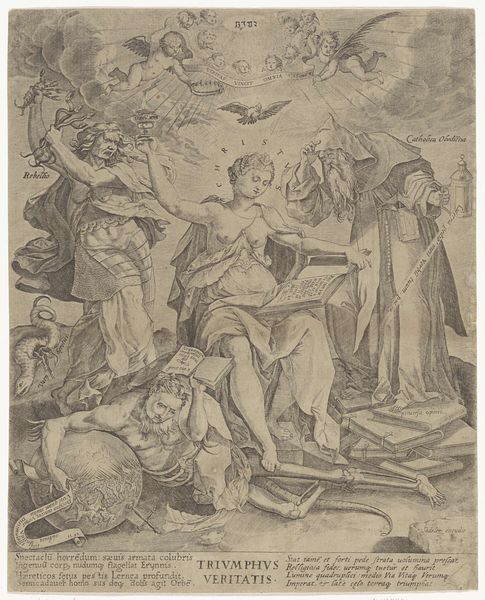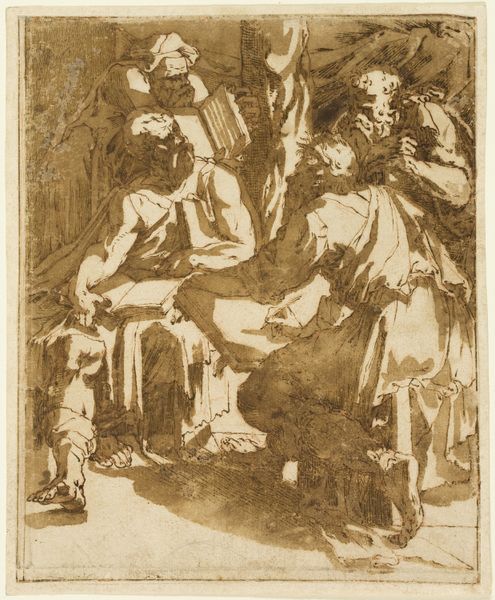
drawing, paper, ink, chalk, charcoal
#
drawing
#
allegory
#
charcoal drawing
#
figuration
#
paper
#
ink
#
chalk
#
charcoal
#
history-painting
#
academic-art
Copyright: Public Domain
Curator: This drawing, “Pallas and the Parcae,” is attributed to Alessandro Maganza. Currently, it resides here at the Städel Museum. It’s rendered in chalk, charcoal, pen and ink on paper. Editor: Immediately, I notice the figures are intertwined yet bathed in a very unified tonality, giving it an overall impression of, well, smoky deliberation. There's an intense internal focus suggested in their gestures and positioning. Curator: Indeed. Maganza, working within a Venetian artistic climate that highly valued disegno, employs a range of materials. Consider the interplay between the crisp ink lines defining musculature and the softer chalk modeling form, particularly noticeable on Pallas's figure. How the artisanal nature of this piece echoes the implied act of creation. Editor: I see what you mean. It’s an interesting interplay of implied violence—cutting of the thread—and divine observation. The composition seems very purposefully arranged. Curator: Certainly. Consider how Maganza integrates these mythological elements. Pallas, also known as Athena, stands witness as the Parcae, or the Fates, enact their duty. The means by which the mythological scene is rendered becomes as relevant as the narrative. What might this say about the period in which it was made and by whom? Editor: By unifying these characters, I'm wondering about their interaction. Notice Athena's presence overseeing destiny and weaving a historical moment through implied actions. Curator: What strikes me is the drawing’s almost ephemeral quality, given its serious subject. The marks, though deliberate, suggest a momentary vision captured, a sketch preceding perhaps something grander. Editor: Precisely! This work challenges the typical material stratification present within society at the time it was rendered. The drawing feels not complete but offers up complex commentary around time, existence, and mortality. It pushes up against the viewer and suggests greater cultural narratives related to how time can change our lives forever. Curator: And this careful choreography of line and tone serves, ultimately, to create a composition with lasting emotional resonance. The materials offer viewers great opportunities to examine ideas around life. Editor: Absolutely. Examining this work through a formal lens heightens an engagement and experience of it! Curator: From a materialist position, we might conclude that Maganza skillfully interwove themes and means in an innovative historical record of both form and subject.
Comments
No comments
Be the first to comment and join the conversation on the ultimate creative platform.
